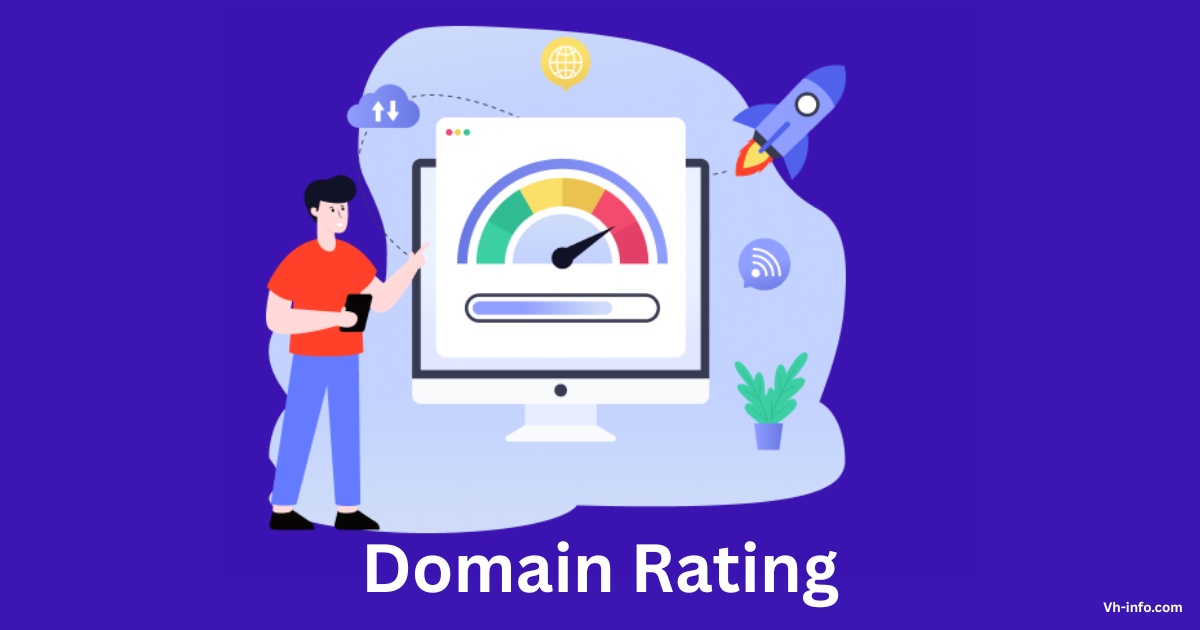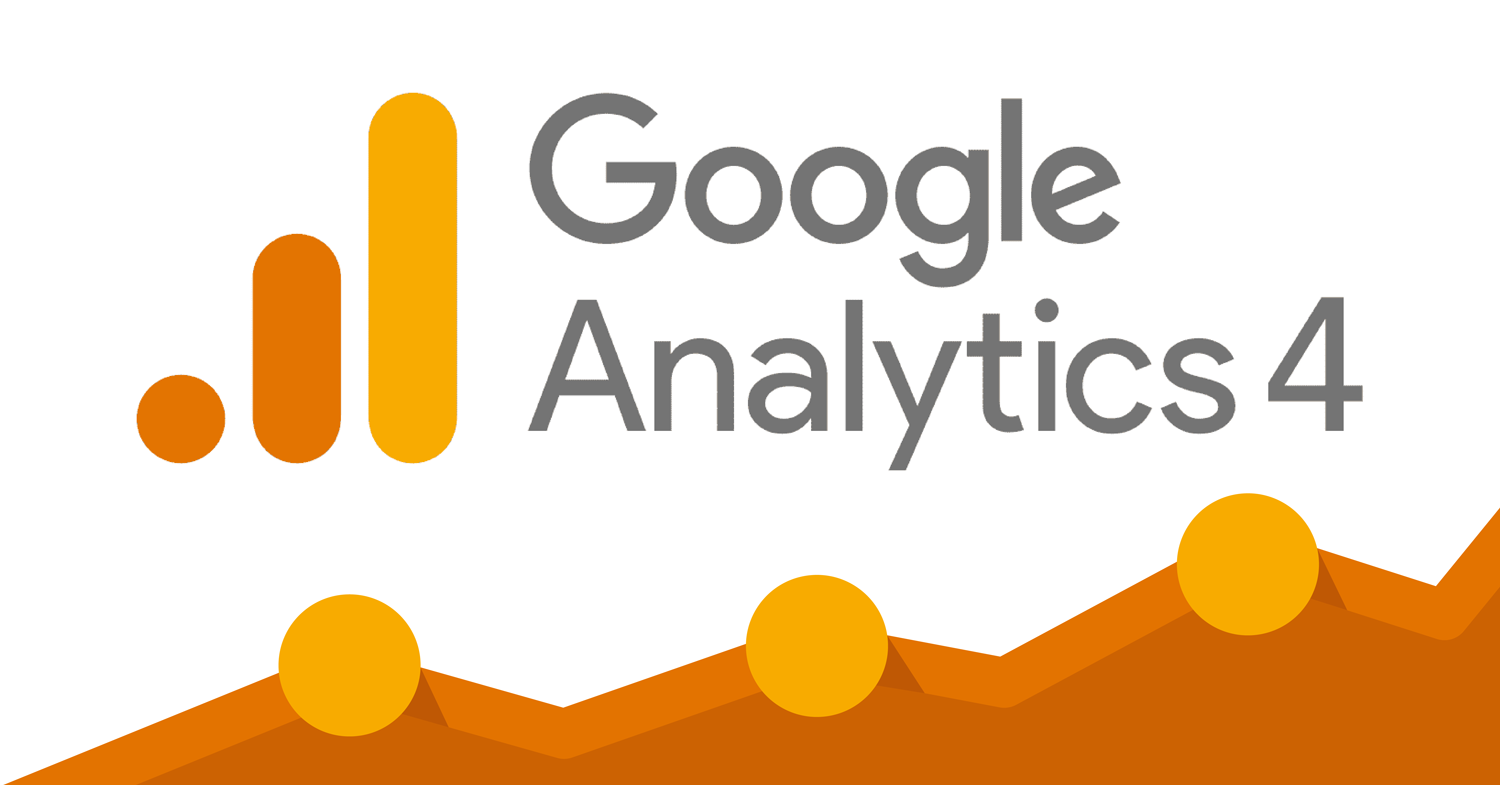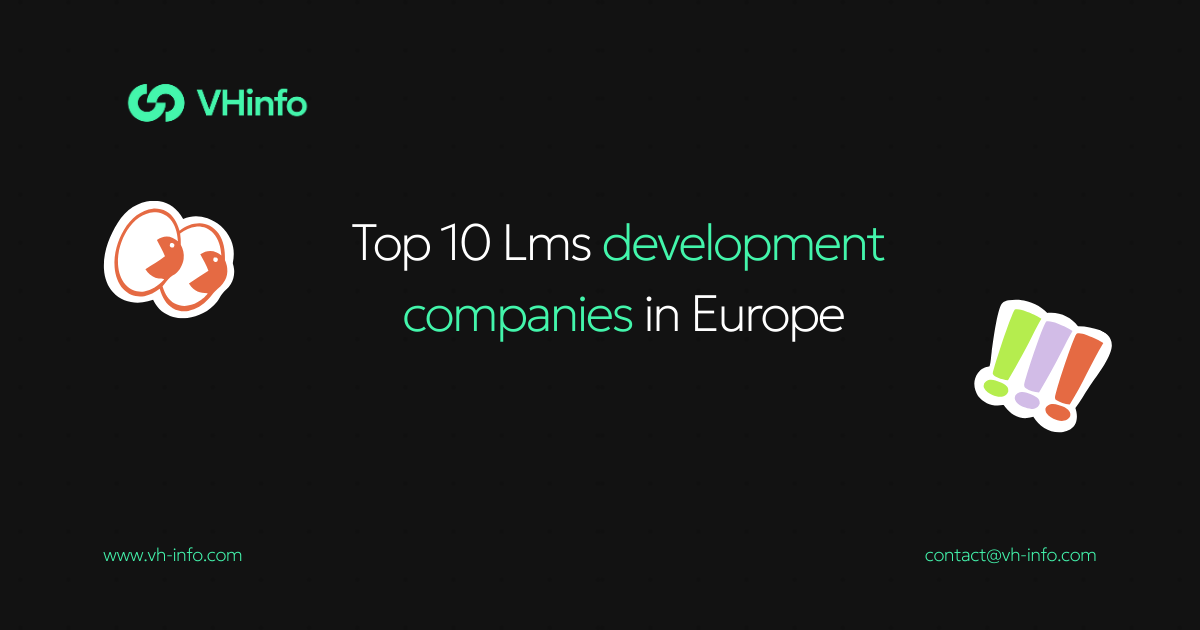Domain rating stands as a key metric in the SEO world that measures the strength and authority of your website.
As search engines continue to refine their algorithms, understanding domain rating has become essential for anyone looking to improve their website’s visibility in search results. For SaaS companies particularly, a strong domain rating can mean the difference between getting found by potential customers or getting lost in the digital noise.
At VH-info, we’ve helped numerous SaaS brands improve their domain rating through strategic link building services. We’ve seen firsthand how improved domain rating correlates with better search engine rankings, increased organic traffic, and ultimately, more conversions.
What is Domain Rating (DR)?
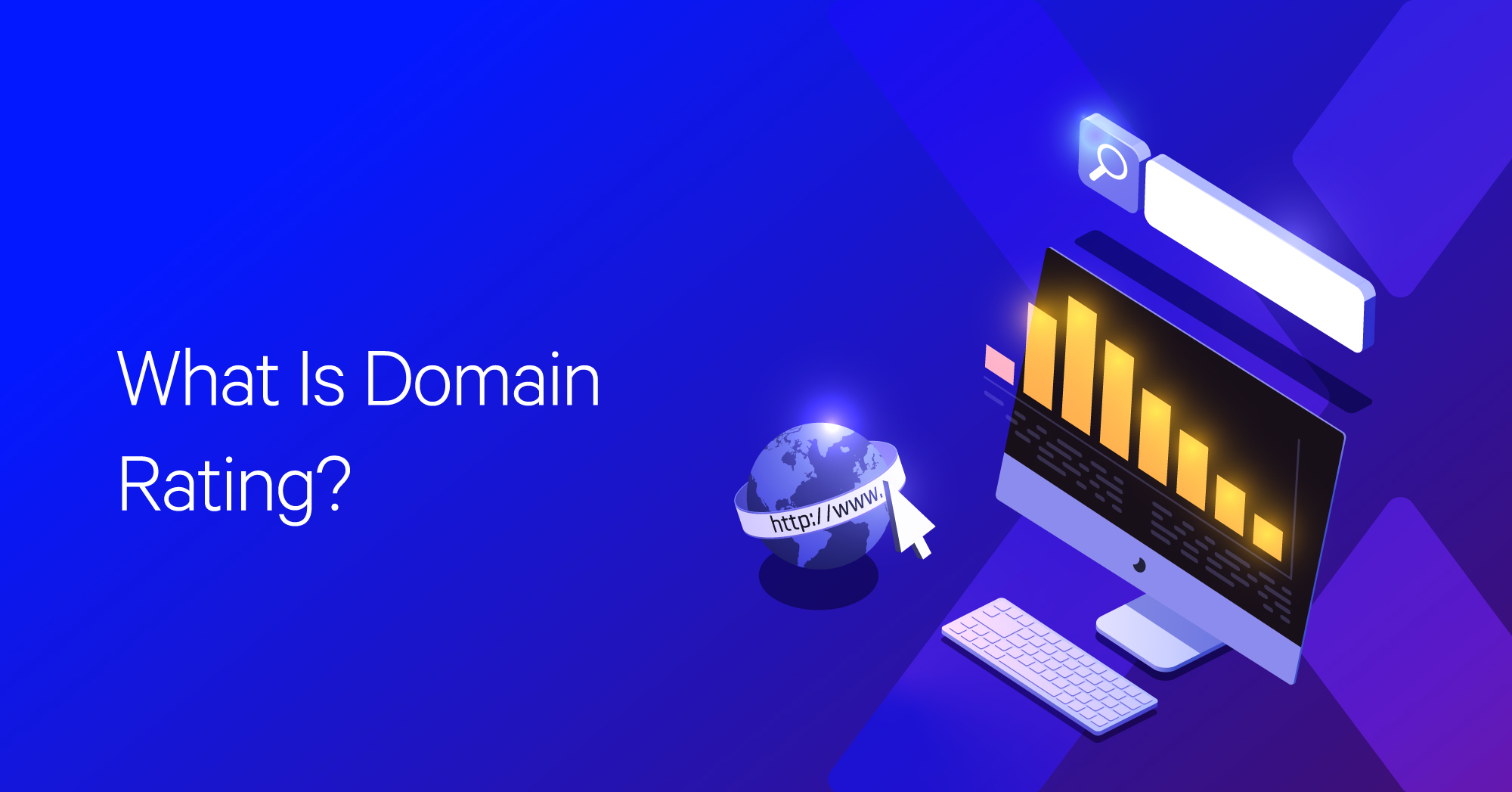
Domain Rating (DR) is an SEO metric developed by Ahrefs that measures the strength of a website’s backlink profile on a scale from 0 to 100. In simple terms, it indicates how authoritative your website appears to search engines based on the quality and quantity of websites linking to yours.
The higher your domain rating, the stronger your website’s backlink profile is considered to be. This metric takes into account the number of unique domains linking to your site, as well as the quality of those external links.
Domain rating serves as a reliable indicator of a website’s ability to rank in search engine result pages (SERPs). While it’s not directly a Google ranking factor, it correlates strongly with websites that perform well in search results.
For SaaS companies, domain rating is particularly valuable as it helps quantify your website’s authority compared to competitors in your niche. At VH-info, we’ve observed that SaaS websites with higher domain ratings typically achieve better keyword rankings and attract more organic traffic.
Why Does Domain Rating Matter In SEO?
Domain rating matters significantly in SEO for several reasons that directly impact your website’s performance in search results:
- Stronger Ranking Potential: Websites with higher domain ratings generally have an easier time ranking for competitive keywords. While domain rating itself isn’t a direct Google ranking factor, the quality backlinks that contribute to a high DR are valued by search engines.
- Increased Trust: A high domain rating signals to both users and search engines that your website is trustworthy and authoritative. This increased trust can lead to better user experience metrics, which do influence your SEO performance.
- Better Link Equity Distribution: When you have a high domain rating, any internal links you create distribute more “link equity” throughout your site, helping more of your pages rank well.
- Competitive Advantage: In competitive SaaS markets, domain rating often separates top-performing websites from the rest. When two pieces of content are equally valuable, search engines typically favor the one from the site with stronger overall authority.
- Faster Indexing: Search engines tend to crawl high-authority websites more frequently, meaning your new content gets indexed and ranked faster.
At VH-info, our SaaS link building services focus heavily on improving domain rating because we’ve seen the direct impact it has on search traffic. When we help clients increase their domain rating, we consistently observe corresponding improvements in their organic visibility and keyword rankings.
How Does Domain Rating Work?
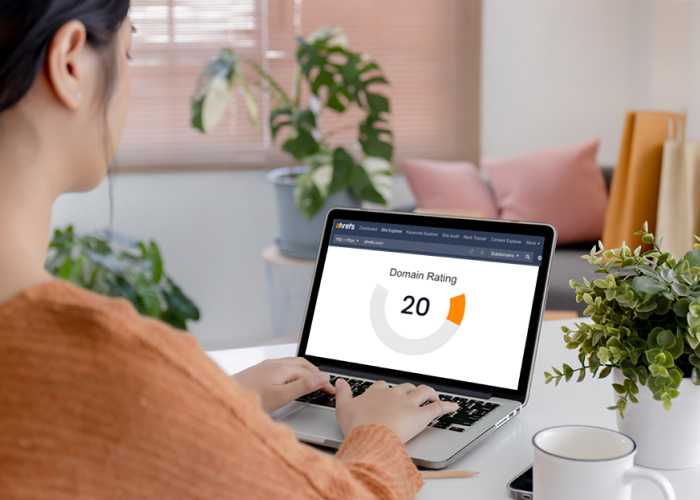
Domain rating works on a logarithmic scale, which means that increasing your score becomes progressively more difficult as you move up the scale. Moving from DR 10 to DR 20 requires fewer quality backlinks than moving from DR 60 to DR 70.
The system considers several factors when calculating domain rating:
- Quality of Backlinks: Links from websites with high domain ratings pass more authority than links from low-rated sites.
- Number of Unique Referring Domains: Domain rating values the number of different websites linking to you more than the total number of links. Ten links from ten different websites will typically boost your domain rating more than 100 links from a single website.
- Relevance of Linking Domains: Links from websites in similar industries or niches tend to carry more weight for your domain rating.
- Link Attributes: Follow vs. nofollow links are evaluated differently, with followed links passing more authority to your domain rating.
- Link Profile Diversity: A natural mix of link types from various sources contributes to a healthier domain rating growth.
The algorithm behind domain rating continually evolves, using machine learning to better assess the quality and relevance of backlinks. This ensures that the domain rating remains a meaningful reflection of a website’s authority in the eyes of search engines.
For SaaS companies, understanding how domain rating works helps inform more effective link building strategies. At VH-info, we focus on acquiring links from relevant, high-authority domains to maximize the impact on our clients’ domain ratings.
What Is A Good Domain Rating?

Determining what constitutes a “good” domain rating is a relative term that depends largely on your industry, competitors, and business goals.
However, we can provide some general guidelines:
- DR 0-20: Typical for new or small websites with few backlinks
- DR 21-40: Average for established small to medium businesses
- DR 41-60: Strong rating indicating significant authority
- DR 61-80: Excellent rating achieved by well-established websites with robust backlink profiles
- DR 81-100: Elite level typically reserved for major brands and authoritative institutions
Rather than fixating on reaching a specific domain rating number, the more practical approach is to benchmark against your direct competitors. If the top-ranking websites in your SaaS niche have domain ratings between 40-50, then your goal should be to reach and exceed that range.
For context, most successful SaaS companies maintain domain ratings between 30-70, depending on their size and market presence.
Major players like Salesforce or HubSpot have ratings in the 80+ range, while newer SaaS startups might operate effectively with ratings in the 20-40 range.
At VH-info, we help our SaaS clients establish realistic domain rating goals based on competitive analysis. We focus on steady, sustainable growth rather than quick spikes that might trigger algorithmic penalties.
How Is Domain Rating Calculated?
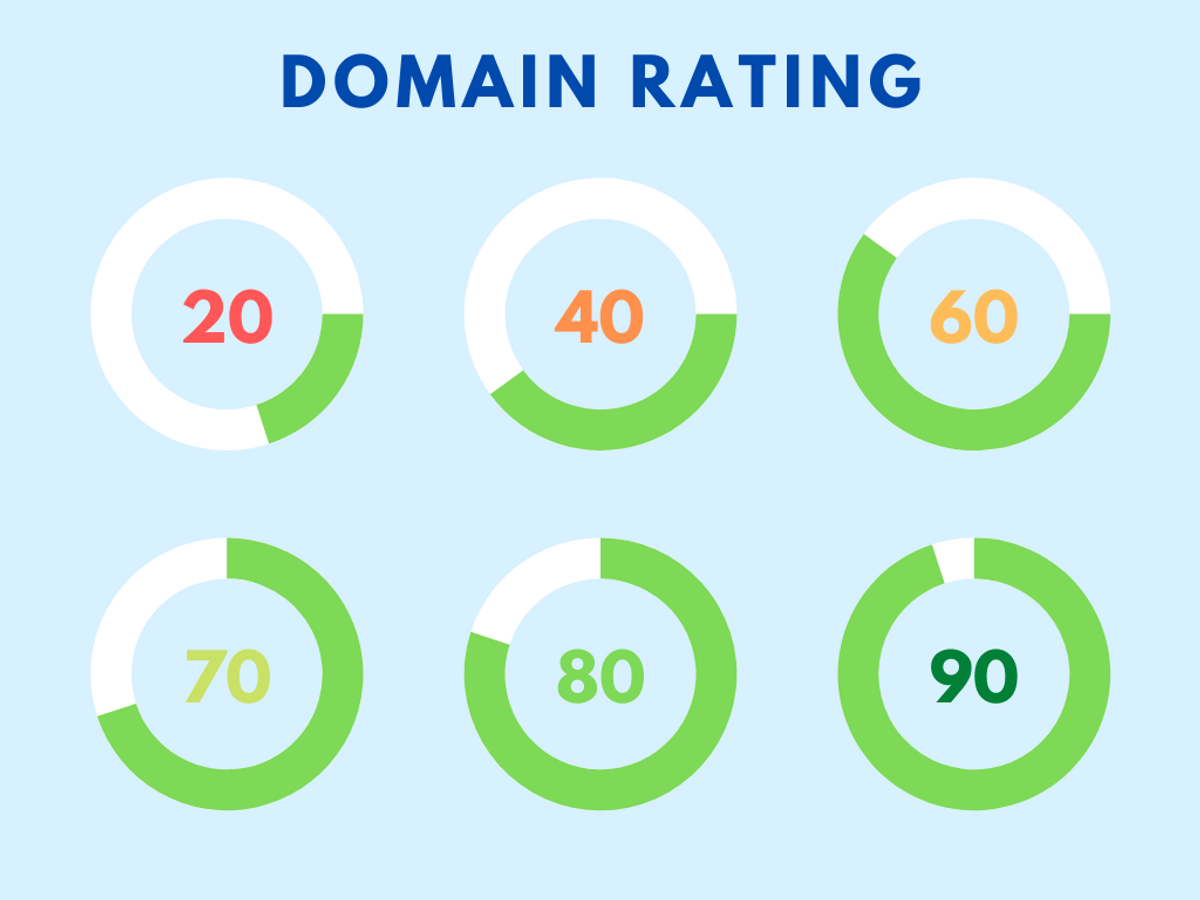
Domain rating calculation involves a complex algorithm that assesses multiple aspects of your website’s backlink profile. While the exact formula used by Ahrefs remains proprietary, we can outline the key factors that influence the calculation:
- Backlink Quality: The domain rating of websites linking to yours significantly impacts your score. A few links from websites with high domain ratings can have more impact than many links from low-rated sites.
- Link Quantity From Unique Domains: The algorithm places more emphasis on the number of unique referring domains than the total number of links. This prevents manipulation through excessive linking from a single source.
- Link Relevance: Links from websites in your industry or niche carry more weight in the calculation.
- Link Attributes: The calculation distinguishes between follow links (which pass authority) and nofollow links (which generally don’t).
- Outbound Links: How many external sites the linking domain connects to affects how much authority passes to you. A site that links to hundreds of external sites passes less authority per link than one that links selectively.
The domain rating calculation also employs normalization techniques to create a 0-100 scale.
This logarithmic scale makes it increasingly difficult to move up as your score improves. The difference in backlink quality needed to move from DR 10 to DR 20 is much less than moving from DR 70 to DR 80.
It’s worth noting that domain rating calculations are periodically updated by Ahrefs, so scores may fluctuate when their algorithm is refined. This doesn’t necessarily reflect changes in your website’s actual authority in the eyes of search engines.
How To Improve Your Domain Rating (i.e., “Authority” Score)
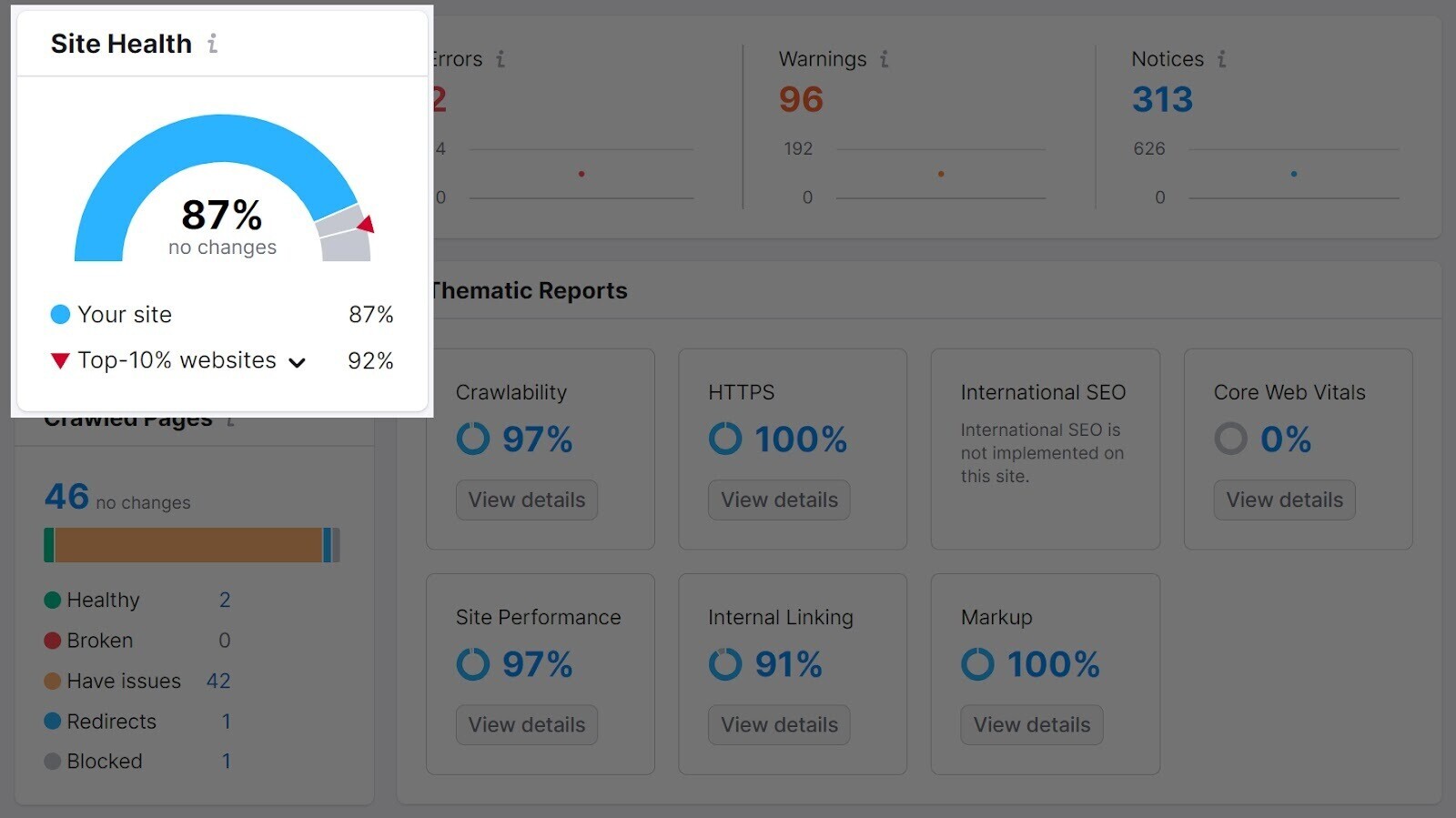
Improving your domain rating requires a strategic approach to building quality backlinks and enhancing your overall SEO performance.
Here are effective strategies to boost your website’s authority score:
- Focus On Quality Over Quantity: Earning one link from a high-authority website in your niche is often more valuable than dozens of links from low-quality sources. At VH-info, we prioritize acquiring links from websites with strong domain ratings themselves.
- Create Linkable Assets: Develop high-quality content that naturally attracts backlinks. This includes original research, comprehensive guides, unique data visualizations, and tools that provide value to your audience.
- Guest Posting On Authoritative Sites: Contributing valuable content to reputable sites in your industry helps build quality backlinks while establishing your expertise. Ensure your guest posts are substantive and relevant to maximize their impact on your domain rating.
- Build Relationships With Industry Influencers: Networking with thought leaders can lead to natural link opportunities. Engage authentically through social media, events, and collaborative projects.
- Reclaim Lost Or Broken Backlinks: Monitor your backlink profile regularly and reach out to website owners who have removed links to your site or have broken links pointing to your domain.
- Optimize Internal Linking: While external links have the most direct impact on domain rating, a strong internal linking strategy helps distribute link equity throughout your site, improving the overall strength of your domain.
- Remove Toxic Backlinks: Disavow links from spammy or low-quality websites that could potentially harm your domain rating.
- Improve Your Content Quality: Search engines and website owners are more likely to link to high-quality, authoritative content. Regularly update your existing content to maintain its relevance and value.
- Promote Your Content Strategically: Share your content through appropriate channels to increase its visibility and likelihood of attracting natural backlinks.
- Monitor and Adapt Your Strategy: Use SEO tools to track changes in your domain rating and adjust your approach based on what’s working best for your specific situation.
At VH-info, we’ve helped numerous SaaS companies implement these strategies to significantly improve their domain rating over time. Our approach combines technical expertise with content marketing to build natural, high-quality backlink profiles that boost domain authority sustainably.
How To Use “Website Authority”?
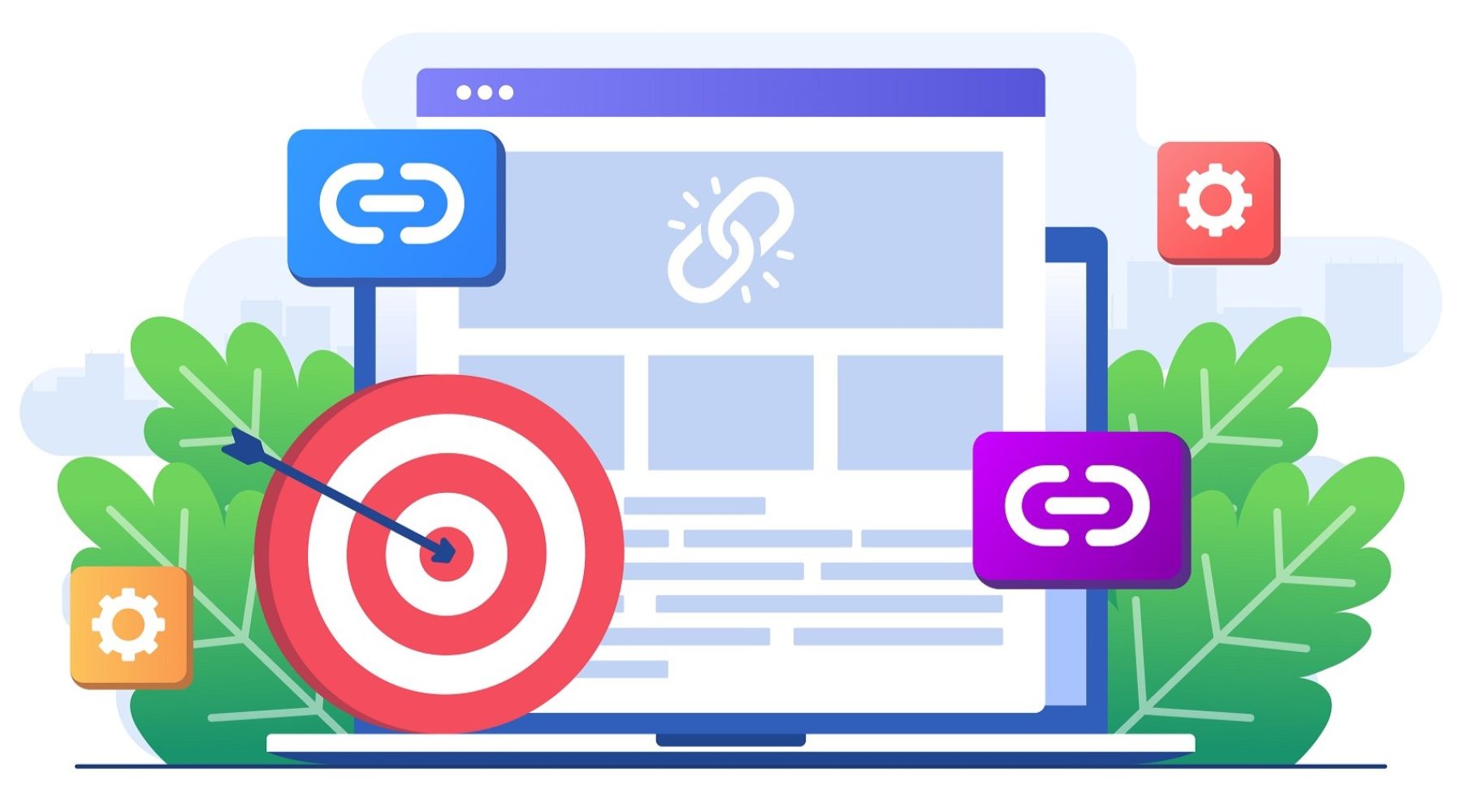
Understanding and using your website’s authority effectively can give you significant advantages in your SEO strategy.
Here’s how to make the most of your domain rating:
Benchmarking Against Your Competitors
One of the most practical uses of domain rating is comparing your website’s authority to that of your competitors.
This comparison provides valuable context and helps set realistic goals:
- Identify Your Main Competitors: Create a list of websites that compete directly with yours for the same keywords and audience.
- Analyze Their Domain Ratings: Use SEO tools to check the domain ratings of each competitor.
- Identify Authority Gaps: Determine how far ahead or behind you are compared to industry averages and top performers.
- Set Strategic Goals: Based on this analysis, establish realistic targets for improving your domain rating.
- Study Successful Competitors: Examine the backlink profiles of higher-rated competitors to identify potential link opportunities and content strategies that might work for your site.
This benchmarking exercise helps you understand what’s possible in your niche and provides a roadmap for improvement. At VH-info, we conduct these competitive analyses for our SaaS clients to develop tailored link building strategies that close authority gaps efficiently.
Vetting Link Prospects
Domain rating serves as an excellent filter when evaluating potential websites for your link building efforts:
- Prioritize Prospects By Authority: Focus your outreach efforts on websites with higher domain ratings to maximize the impact of each new backlink.
- Balance Authority With Relevance: A moderately rated website in your exact niche often provides more value than a high-rated site with minimal topical relevance.
- Identify Authority Thresholds: Set minimum domain rating requirements for your link building campaigns based on your current authority level and goals.
- Evaluate Link Value: Use domain rating to assess whether a particular link opportunity is worth the resources required to secure it.
- Track Authority Trends: Monitor how a prospect’s domain rating changes over time to identify rising sites worth building relationships with early.
By using domain rating to vet potential link sources, you can allocate your resources more effectively and focus on opportunities with the greatest potential impact on your own website’s authority.
How To Check Domain Rating/Authority (3 Methods)
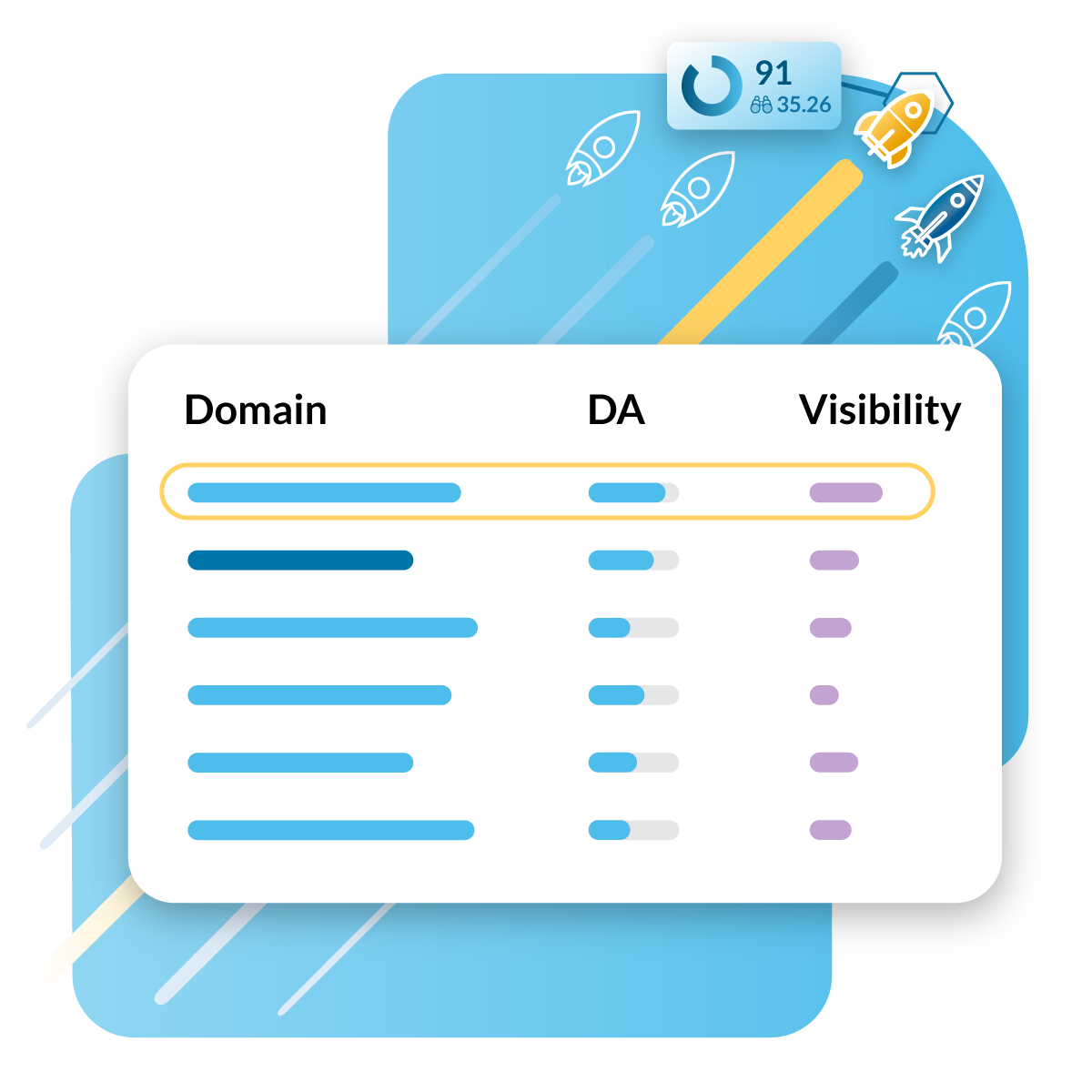
Regularly monitoring your domain rating helps you track progress and make informed decisions about your SEO strategy.
Here are three reliable methods to check your website’s authority:
Loganix DA Checker
Loganix offers a user-friendly domain authority checker that provides quick insights into your website’s authority:
- Easy Access: Their free tool requires no account creation for basic checks.
- Multiple Metrics: Beyond domain authority, it provides additional useful SEO metrics.
- Bulk Checking: You can check multiple domains simultaneously, making competitor analysis efficient.
- Historical Data: Some versions of the tool allow you to track changes in your domain authority over time.
The Loganix tool uses Moz’s domain authority metric, which works on a similar 0-100 scale as domain rating but employs a different calculation methodology.
Ahrefs Website Authority Checker
As the creator of the domain rating metric, Ahrefs offers the most accurate tool for checking your DR:
- Official Source: This is the definitive tool for domain rating as it’s calculated directly by Ahrefs.
- Comprehensive Data: Beyond domain rating, it provides information about referring domains, backlinks, and organic traffic.
- Detailed Insights: The free version gives basic information, while the paid version offers deep analysis of your backlink profile.
- Regular Updates: Ahrefs frequently updates its database, ensuring you get current information.
The Ahrefs Website Authority Checker is available in both free (with limitations) and paid versions, with the latter providing more detailed insights and historical data.
Moz Domain SEO Analysis Tool
Moz pioneered the concept of domain authority and offers a robust tool for analyzing your website’s strength:
- Domain Authority (DA) Metric: While not the same as domain rating, Moz’s DA is another respected measure of website authority.
- Spam Score Analysis: Moz uniquely provides a spam score that helps identify potentially toxic links.
- Link Explorer Integration: The tool connects with Moz’s Link Explorer for deeper backlink analysis.
- Keyword Rankings Integration: Some versions of the tool allow you to see how authority correlates with keyword performance.
Moz’s tool is particularly valuable for analyzing how your site might be viewed by search engines and identifying potential issues that could be holding back your authority growth.
At VH-info, we regularly use all three of these tools to provide our clients with a comprehensive view of their website’s authority. Each offers unique insights that, when combined, give you a more complete understanding of your domain’s strength.
Common Misconceptions About Domain Rating

Despite its importance in SEO, domain rating is often misunderstood.
Let’s clarify some common misconceptions:
- Domain Rating is a Direct Google Ranking Factor: While domain rating correlates with search rankings, Google doesn’t directly use Ahrefs’ metric in its algorithm. Instead, Google has complex systems for evaluating site authority, which domain rating attempts to approximate.
- Higher is Always Better: While a higher domain rating generally indicates a stronger site, context matters. A DR 40 site with highly relevant content and backlinks might outperform a DR 60 site with less relevant signals for specific keywords.
- Quick Increases Are Possible: Due to its logarithmic scale, domain rating typically improves gradually. Sudden large jumps are rare and might indicate artificial manipulation that could lead to penalties.
- All Backlinks Increase Domain Rating: Low-quality or spammy backlinks can harm your domain rating and SEO performance. Quality matters more than quantity.
- Domain Rating is the Same as Page Authority: Domain rating measures the strength of your entire domain, while page authority (or URL Rating in Ahrefs) measures individual pages. A site can have a high domain rating but still have pages with low page authority.
- You Need Thousands of Backlinks For a Good Score: Some sites achieve respectable domain ratings with relatively few, but extremely high-quality, backlinks. It’s about the authority of the linking sites, not just numbers.
- Domain Rating Perfectly Predicts Rankings: While there’s a correlation, many other factors influence rankings, including content quality, user experience, and technical SEO aspects.
- All SEO Tools Measure Authority The Same Way: Different tools use different methodologies. Ahrefs’ domain rating is not identical to Moz’s domain authority or Semrush’s authority score.
Understanding these nuances helps you approach domain rating more strategically. At VH-info, we educate our clients about these misconceptions to set realistic expectations and develop more effective SEO strategies.
Our Top Tips For Improving Your Domain Rating
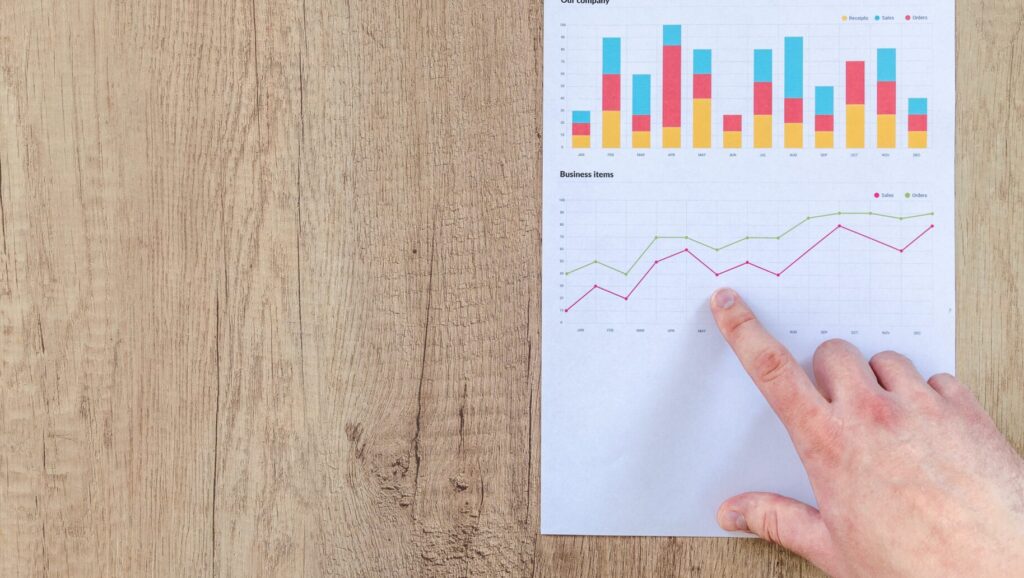
If you want to increase your website’s authority, there are many steps you can take. These steps can be big or small, but all can help. You should focus on things like creating content and improving technical aspects. A variety of strategies is important.
Here are some helpful tips to begin:
- Create Your Own Research and Data: Publishing original research or unique data is a great way to attract quality backlinks. For example, you could conduct surveys, analyze industry trends, or share performance metrics that others in your field will find valuable. Websites often link to such content as a trusted source, improving your backlink profile and increasing your domain rating.
- Rank Organically For Data-Based Keywords: Targeting data-focused keywords like “SEO statistics” or “content marketing metrics” can help you rank higher in search engine results. Create detailed blog posts or reports around these terms and include relevant content that adds value. Ranking for such keywords not only drives organic traffic but also attracts inbound links from other reputable sites.
- Get Links From Easy Sources: Start by securing backlinks from straightforward sources like business directories, partner websites, or industry associations. For example, listing your SaaS business in software directories or collaborating with integration partners can help build your link profile. These easy wins contribute to a higher domain authority score over time.
- Create A Community Of Writers: Encourage guest writers or industry experts to contribute to your blog. This not only diversifies your content but also increases the chances of earning backlinks when contributors share their articles on social media or their websites. Building relationships with writers strengthens your overall link-building efforts.
- Improve Your Existing Content: Audit your current blog posts and web pages to ensure they provide relevant content and align with SEO best practices. Update outdated information, add new insights, and optimize for keyword rankings. High-quality content is more likely to attract backlinks from similar sites, boosting your website’s authority.
- Look At Your Technical SEO: Technical SEO issues can hold back your domain rating growth. Fix broken links, improve page load speed, and ensure mobile-friendliness to enhance user experience. A technically sound website is more likely to rank higher in Google search results and attract quality backlinks.
- Implement An Internal Linking Strategy: Internal links help distribute link equity across your site and improve the strength of individual web pages. Use descriptive anchor text to connect related pages within your site. For example, link blog posts about “SEO tools” to related pages about “keyword research” or “content strategy.” This not only improves navigation but also strengthens the overall authority of your website.
Domain Rating Vs. Domain Authority: What’s The Difference?

Domain Rating (DR) and Domain Authority (DA) are similar metrics created by different SEO tools to measure website authority.
Understanding their differences helps you interpret SEO data more accurately:
Origin and Calculation:
- Domain Rating (DR): Developed by Ahrefs, using their own proprietary algorithm and link database.
- Domain Authority (DA): Created by Moz, using a different methodology and database of links.
Scale and Updates:
- Both metrics use a 0-100 logarithmic scale
- Ahrefs typically updates Domain Rating more frequently than Moz updates Domain Authority
Focus Areas:
- Domain Rating: Places greater emphasis on the number and quality of unique referring domains
- Domain Authority: Includes additional factors beyond backlinks, including on-page elements and perceived spam factors
Correlation With Rankings:
- Domain Rating: Often shows a stronger correlation with rankings for newer or highly competitive keywords
- Domain Authority: Sometimes better predicts rankings for established websites in less competitive niches
Usage in the Industry:
- Many SEO professionals use both metrics for a more complete picture
- Some industries tend to favor one metric over the other based on historical correlation with their specific ranking patterns
While both metrics aim to predict a website’s ability to rank in search results, they approach this prediction from slightly different angles.
At VH-info, we analyze both Domain Rating and Domain Authority for our clients to provide a more comprehensive view of their website’s standing in the SEO landscape.
Neither metric is inherently better than the other—they’re simply different tools trying to approximate the complex authority calculations that search engines perform. Using them in combination provides the most complete picture of your website’s authority.
FAQ’s:
How Often Should I Check My Domain Rating?
You should check your domain rating approximately once per month.
Domain rating typically doesn’t change dramatically over short periods, making weekly checks unnecessary for most websites. Monthly monitoring allows you to identify trends while giving your SEO efforts enough time to show results.
For websites actively engaged in link building campaigns, checking bi-weekly might be warranted to track progress more closely.
At VH-info, we provide our clients with monthly domain rating reports as part of our SaaS link building services, with additional checks following major link acquisition milestones.
Can Domain Rating Guarantee Higher Search Rankings?
No, domain rating alone cannot guarantee higher search rankings.
While there’s a strong correlation between domain rating and search performance, many other factors influence rankings, including:
- Content quality and relevance
- On-page SEO optimization
- Technical SEO factors
- User experience signals
- Search intent alignment
- Competitive landscape
Domain rating is best viewed as a foundational element that makes it easier to rank, rather than a guarantee of rankings. A site with high domain rating but poor content or technical issues will still struggle to rank well.
Can A New Website Achieve A High Domain Rating Quickly?
It’s extremely challenging for a new website to achieve a high domain rating quickly through legitimate means.
Due to the logarithmic nature of the domain rating scale and the time it takes to build quality backlinks, most new websites require 6-12 months of consistent SEO work to reach a domain rating of 30+.
Attempts to rapidly increase domain rating often involve risky tactics that violate search engine guidelines and can result in penalties.
At VH-info, we focus on sustainable growth through white-hat link building strategies that build authority gradually but securely.
How Do Changes In Domain Rating Affect My Site’s Traffic?
Changes in domain rating don’t directly cause traffic fluctuations, but they often correlate with traffic changes for several reasons:
- The same quality backlinks that boost domain rating also tend to improve rankings for specific keywords
- Higher domain rating makes it easier to rank for new keywords, potentially expanding your traffic sources
- Increased domain rating can help your content rank more quickly after publication
However, it’s important to note that small domain rating changes (1-3 points) rarely result in noticeable traffic differences. Significant traffic impacts typically follow larger authority shifts or occur when domain rating improvements push you past competitors for valuable keywords.
Is Domain Rating A Google Ranking Factor?
No, domain rating is not directly a Google ranking factor. Domain rating is a metric created by Ahrefs to approximate how Google might evaluate site authority. Google has confirmed they don’t use third-party metrics like domain rating in their algorithm.
However, many of the elements that contribute to a high domain rating—quality backlinks from relevant sites, strong link profile diversity, natural link patterns—are indeed factors Google considers when determining rankings.
This creates a strong correlation between domain rating and search performance, even though the metric itself isn’t used by Google.
At VH-info, we focus on building the kinds of high-quality backlinks that both improve domain rating and send positive ranking signals to Google, addressing the underlying factors rather than just the metric.
Conclusion
Domain rating serves as a valuable metric for measuring your website’s authority and backlink strength in the competitive SEO landscape. While not a direct ranking factor, it provides critical insights into your site’s potential to perform well in search results.
For SaaS companies, investing in improving domain rating offers multiple benefits: enhanced visibility in search results, increased credibility with potential customers, and a stronger foundation for all your content marketing efforts. The strategies outlined in this guide—from creating original research to implementing proper internal linking—provide a roadmap for sustainable domain rating growth.
Remember that domain rating improvement is a marathon, not a sprint. Focus on building high-quality backlinks from relevant sources rather than pursuing quick gains through questionable tactics. Patience and consistency yield the most durable results.
At VH-info, we specialize in helping SaaS companies build strategic link profiles that boost domain rating while driving targeted traffic.
Our approach combines technical expertise with content marketing to create sustainable authority growth that translates into better rankings and increased organic traffic.
Whether you’re just starting your SEO journey or looking to break through a ranking plateau, giving proper attention to your domain rating—alongside content quality and technical optimization—will help position your SaaS website for long-term success in an increasingly competitive digital landscape.
